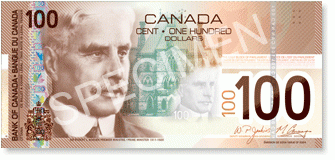
By Mike Jones
It has been a “v-shaped” sort of night in the NZD. After sliding to an overnight low of nearly 0.6700, NZD/USD has since clawed back most of its losses.
Sentiment towards “growth-sensitive” currencies like the NZD soured over the first part of the night as investors’ risk appetite was knocked back.
A poor showing from the May Chinese PMI manufacturing survey further piqued fears about a slowing in Chinese demand, undermining Asian equity markets and global commodity prices. Against a broadly stronger USD, NZD/USD slipped to nearly 0.6700.
However, the lows in NZD/USD didn’t last for long. Just when investors were at their most pessimistic, strong US manufacturing data and a 25bps rate hike from the Bank of Canada restored optimism about the global recovery. US stocks pared some early losses, risk appetite improved and NZD/USD was soon heading back towards 0.6800.
A steady drift higher in NZD/AUD also underpinned the NZD last night.
The RBA opted to keep its policy rate unchanged at 4.5% yesterday, as expected. But the accompanying statement betrayed increased concern about European sovereign creditworthiness, reinforcing market expectations the RBA is on hold for the foreseeable future.
In contrast, NZ markets are locked and loaded for the first RBNZ rate hike next week. Indeed, last nights BOC hike would appear to pave the way for such.
Against this backdrop, NZ-AU 3-year swap spreads have increased 19bps this week, underscoring NZD/AUD’s push above 0.8100 last night. Last night’s Fonterra online milk price auction broadly matched our expectations. The 3.5% fall in the composite dairy index wasn’t a bad result given the ramp up in US and European supply, not to mention sharp falls in the likes of oil and other global commodity prices.
Notably, dairy prices are still some 84% above year-ago levels. For today, the NZD/USD is expected to struggle towards resistance at 0.6850. Initial support is seen towards the overnight low of 0.6700.
Majors
Volatility was the order of the day in currency markets overnight. Most of the majors spent the night tracking gyrations in global equity markets. The USD index ended the night about where it started.
The first part of the night was characterised by rising risk aversion. As a result, the “safe-haven” currencies of the USD and JPY remained in hot demand.
Yesterday’s Chinese PMI manufacturing survey under whelmed market expectations (53.9 vs. 54.5 expected), raising fears that global demand is beginning to falter. Asian equities were broadly weaker in the wake of the data and ‘commodity-linked’ currencies fell out of favour. USD/CAD rose from 1.0440 to 1.0540 and AUD/USD slipped below 0.8300.
Sentiment towards the AUD wasn’t helped by yesterday’s somewhat cautious sounding RBA statement. Meantime, EUR/USD slid to fresh 4-year lows below 1.2150 as yesterday’s sombre warning from the ECB of a ‘second wave’ of bank losses rattled investors’ confidence.
The Eurozone PMI was hardly awe inspiring either (55.8 vs. 55.9 expected). However, risk appetite improved over the second part of the night. After opening nearly 1% lower, US stocks lifted off their lows.
Lingering doubts about the global economy were assuaged by a) robust US manufacturing data ¬– the US ISM survey dipped only slightly to 59.7 in May, compared to the 59.0 expected – and b) the Bank of Canada hiking interest rates 25bps to 0.5%, as expected. Easing risk aversion saw both the USD and JPY shed their early gains. EUR/USD jumped from below 1.2150 to nearly 1.2300 and AUD/USD pushed back above 0.8300.
However, USD/CAD was hamstrung by the BOC’s decidedly dovish statement. The BOC said future rate hikes would have to be “weighed carefully against domestic and global economic developments”. GBP was the night’s star performer.
Not only did the May UK PMI show manufacturing activity continues to ramp up, but speculation Prudential would abandon its bid for AIG’s Asian business also supported the GBP (as it would involve a large GBP/USD purchase).
GBP/USD climbed from 1.4450 to 1.4700 and EUR/GBP plunged to 1½ year lows around 0.8360. Looking ahead, currencies have spent the past week or so consolidating within familiar ranges, and we suspect this will continue in the short-term. While market sentiment has stabilised somewhat, investors remain wary of further deterioration in Europe’s sovereign debt crisis.
The next big event is likely to be Friday’s US non-farm payrolls data for May. A whopping 513,000 jobs are expected to be added.
* Mike Jones is a currency strategist for BNZ and further research from the BNZ's team of economists is available here.
No chart with that title exists.
We welcome your comments below. If you are not already registered, please register to comment.
Remember we welcome robust, respectful and insightful debate. We don't welcome abusive or defamatory comments and will de-register those repeatedly making such comments. Our current comment policy is here.